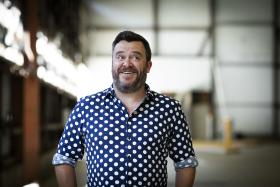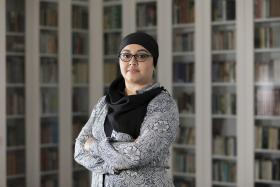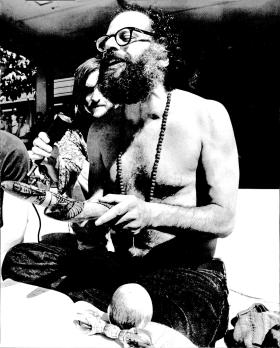There’s a Post-it note stuck in front of Jackson Ryan’s desk that reads, simply, ‘Uncertainty’. It’s a reminder that even when things feel certain, they never really are. The line between ‘maybe’ and ‘yes, ‘could be’ or ‘will be’, is blurry and ever-changing.
Ryan is chafing in that zone of uncertainty as I speak to him. He is caged up in a tiny hotel room in Hobart in what will be, he hopes, the last 24 hours of two weeks of compulsory quarantine before he boards Australia’s newest icebreaker — the RSV (research and supply vessel) Nuyina — on its five-week maiden voyage to Antarctica.
He’s been awarded a coveted berth as a journalist, travelling with the ship to the Australian Antarctic Division’s Casey Station and Davis Station, observing and reporting on the voyage, on the science being undertaken, and on the experience of being in and around the frozen continent, the last great wilderness.
COVID has thrown a spanner in the works of this voyage, necessitating isolation, quarantine and multiple rounds of PCR tests to ensure he is not harbouring a SARS-CoV-2 infection that could be disastrous. Even now, with departure tantalisingly close, technical issues with the ship delay it by a day. Uncertainty indeed.
But that Post-it note was in place long before Ryan thought about applying for this voyage.
It’s integral to Ryan’s work as a science journalist; a reminder that nothing in science is ever truly settled. ‘It’s core to what science is about,’ he says. For science journalists, one constant challenge is to convey that uncertainty.
Ryan is science editor for US-based technology news outlet CNET. He’s also a multi-award-winning writer, a scientist, a games reviewer, a Disney show presenter, and the proud owner of an eye-wateringly colourful collection of Christmas sweaters.
At CNET, his day-to-day work involves writing news and features that cover the length and breadth of science. Tomorrow, and for the next five weeks at least, he’ll be writing about icebreakers and Antarctica. Today, he has been writing about quantum entanglement and tardigrades (somewhat furiously, as he’s trying to correct some misleading headlines and reporting on the subject). Yesterday, it was millipedes. A month ago, it was the COP26 climate change conference. Six months ago, it was the Japanese Space Agency’s thrillingly uncertain mission to land a spacecraft on an asteroid 2.82 billion kilometres away, collect samples, and return in a literal blaze of glory to land in the dusty South Australian outback.
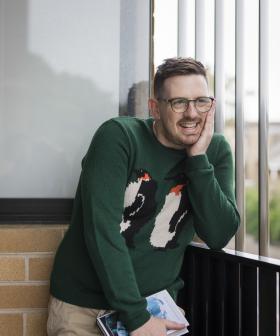
Then the TV show House also captured his imagination. He wanted to be one of the medical students working with Dr Gregory House (played by Hugh Laurie). ‘You get the white board out and hear “this is the problem with immunotherapy” and kick around ideas with your fellow doctors,’ he says. He launched into an undergraduate degree, and then honours in laboratory medicine, at the University of South Australia from 2007, but it didn’t feel right, a situation not helped by his deep loathing of chemistry. He bounced around from virology to haematology to immunology to molecular biology to endocrinology, finally completing a PhD in pharmaceutical and medical science, which focused on the role of vitamin D in skeletal health.
But it wasn’t enough.
‘In those academic research positions, your view of the world is so narrow,’ he says. ‘I was enjoying aspects, but I wanted to enjoy everything all the time.’ One aspect of academia that did appeal to him was the communication of science. Ryan loved travelling to conferences around the world, talking about his research and conversing with other scientists. He also loved writing and kept up his regular blog about video games.
With his PhD drawing to a close, Ryan was at a loose end. But a random sequence of events started with him coming runner-up in a competition to report on a huge video game convention in San Francisco and ended with him being asked to apply for a job hosting a Disney video game show, GamesFest, on Foxtel. Getting this job brought him into contact with the man who is now his boss.
In 2018, Ryan landed a job at CNET, his brief, simply, to write about science. And he has done that with gusto, his work already attracting acclaim from fellow writers in the scientific community. In the three years since he started, Ryan has been a finalist for not one but two Eureka Prizes for Science Journalism, been a runner-up twice for the Bragg UNSW Press Prize for Science Writing and won Young Writer of the Year at the Mumbrella Publish Awards.
Ryan approaches storytelling like he’s designing a rollercoaster, ‘starting low, slowly ticking up, peaking and rapidly coming down for the closer.’ This might be thanks to another of the Post-its that decorate his desk (there are five in total): ‘For Pete’s sake, make it interesting.’
The piece that was shortlisted for two of these awards, ‘To the Dragon Palace and Back’, exemplifies his narrative style. It takes readers on a slow-build, an exhilarating but nailbiting ride alongside the Hayabusa2 spacecraft, sent by the Japanese Space Agency (JAXA) to rendezvous with asteroid 1999 JU3 drifting in space between Earth and Mars in 2018. Hayubusa2’s mission was to observe, to deploy two tiny hopping rovers onto Mars’s surface, to land and collect surface samples and, then, to blast a small crater in the asteroid before landing once again to collect sub-surface material.
Like any space mission, the entire process allows for zero uncertainty in planning and execution and yet, is simultaneously wreathed in uncertainty. The first Hayabusa mission, launched in 2003, suffered even more setbacks than the doomed Apollo 13 journey to the Moon, so there was a lot riding on this one.
Aspects of the Hayabusa2 mission had been reported on extensively around the world, but Ryan wanted to get under the skin of the story, get to know the characters, and write about that wild journey from the moment of launch until the moment the asteroid samples landed.
So, this wasn’t going to be ‘just the facts, ma’am’. The story was steeped in more colour than Jackson’s Christmas sweater collection; from its main character Masaki Fujimoto, Deputy Director of JAXA’s Institute for Space and Astronautical Sciences — and his deep love of the band Queen (‘Don’t Stop Me Now’) — to the chilly 4 am vigil in the red dust of Woomera, waiting for the tell-tale streak of light that marks a capsule’s re-entry into the Earth’s atmosphere.
In every rollercoaster ride, there’s that brief spell where the car has been ratcheted up high above the ground and is slowly circling before the inevitable plunge. The adrenaline is coursing, but there is a chance to look around and see the world from a different angle, before you are flung into the apparent abyss.
Ryan builds these contemplative lulls into many of his stories. ‘That’s something that I think about when I’m writing: how can I stop the action and write a thing that is flowery and delicious to read,’ he says. In the asteroid story, this takes the form of a vignette that tells the bittersweet ancient Japanese folktale of family and lost love, one that gave the asteroid its final name, Ryugu: the Dragon Palace. But these digressions might equally be, ‘Ok, it’s now time to stop where we are, turn and be like, “so, have you heard of ion thrusters? Let’s talk about ion thrusters”.’
This explanatory component is one feature that can distinguish science reporting from other journalism specialities. Before the pandemic, science journalism was perhaps one of the lesser-known mainstream journalism beats in Australia, except when some moment, like the first recording of gravitational waves, or that frequent mirage — ‘Scientists Discover Cure For Cancer’ — propelled it to the front page. Then SARS-CoV-2 happened. Cometh the pandemic, cometh the science journalist. Science journalists have suddenly found their work is consistently scoring more clicks than anything else, as newspaper and magazine readers desperately seek information about how this centurydefining event will affect them.
But again, it comes back to the responsibility of conveying the uncertainty that is inherent in science. Rarely has that been so laid bare as in this pandemic, when science has moved at break-neck speed, but taking two steps forward and, often, one step back as new studies build on, or sometimes contradict, a previous one. ‘There is a responsibility for science journalists to be able to sift through that information that comes to them in a scientific way,’ Ryan says. This doesn’t require a science degree — although it certainly helps — but, rather, an awareness of the constantly evolving nature of scientific evidence. Hence the ‘Uncertainty’ Post-it. ‘It reminds me to say, hey, this might be true right now, but if we get more data, maybe it won’t be.’
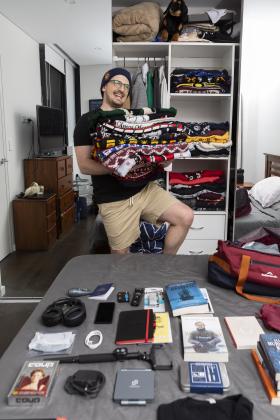
Ryan sees science journalists as having a responsibility to tackle misinformation, or at least provide more level-headed context for the sensationalist ‘breakthrough’ headlines that cause scientists to grit their teeth. ‘We’re always going to have to contend with the mainstream media jumping on a very interesting story for clicks,’ Ryan says. Science journalists will be the ones who read the study, interrogate the science and the scientists, and get to the real story about, say, why tardigrades aren’t actually achieving quantum entanglement with qubits. Also explaining what the heck tardigrades, qubits and quantum entanglement are. And why they matter.
That need to convey uncertainty and context has never been greater than during the pandemic. As Ryan waits in his hotel room, the Omicron variant is running rampant around the world, and he’s frustrated by the lack of uncertainty in the reporting about it.
‘Even if a scientist says to you, based on its spike protein our vaccines look like they should work [against Omicron], there’s still a level of uncertainty there, and you have to tell the reader that,’ he says. ‘Downplaying it risks giving a false sense of security, which could have potentially deadly consequences.’
As we speak, Ryan gets a text confirming that the RSV Nuyina will depart tomorrow. It’s good news, but having been reading non-fiction books about various Antarctic voyages — including the disastrous 1897 journey of the Belgian ship the RV Belgica, during which everything that could go wrong did — he’s finely attuned to any bad omens.
That said, if things do go wrong, it will make a great story. That’s not why he’s on board, but there aren’t any express rules forbidding the embedded journalists from reporting on the journey, warts and all. ‘If there was a fire on the ship, I’m sorry but I can’t not write that story.’
Whatever happens, this is the opportunity of a lifetime. ‘I’m as excited as I can be, in terms of constantly imagining what I will see,’ he says. But even at the ‘end of the world’, the spectre of climate change looms. ‘It’s affected by climate change as much as anywhere, sometimes even worse.’
Ryan’s ethos is ‘to write the story only you can write’. In an era where 6000-word long-form pieces might only be read through to the last word by a tiny fraction of those who visit a website or pick up a magazine, he believes the only person a writer can ever truly write for is themselves. ‘If you approach your craft in that way, other people are going to find it and be like “Holy shit, I didn’t know this” and they’ll be interested by it.’ And if those 6000 words are colourful and exhilarating enough to hold the attention of even just 1 per cent of readers and take them right to the end of a journey to a distant asteroid or a voyage on an Antarctica icebreaker, then, he says, ‘you’ve done enough’.
Bianca Nogrady is a Blue Mountains-based science journalist whose work has appeared in Nature, The Atlantic, Wired UK, Scientific American, Undark and Australian Geographic. She is two-time editor of Best Australian Science Writing.
This story appears in Openbook autumn 2022.


